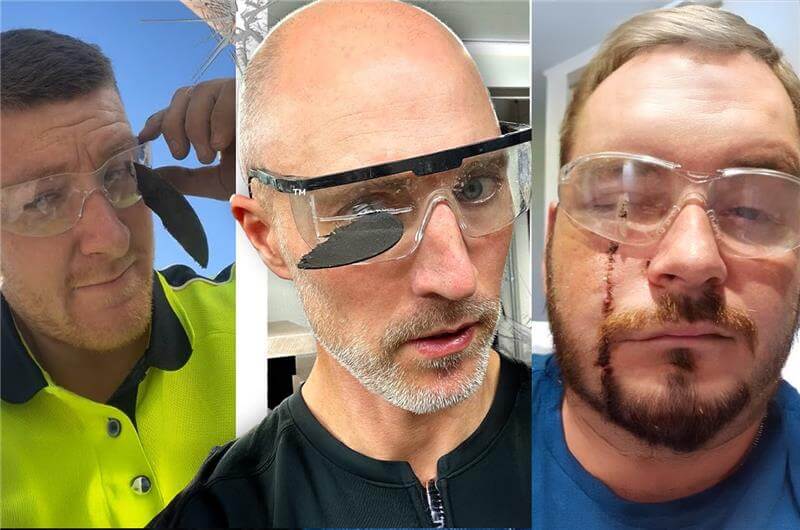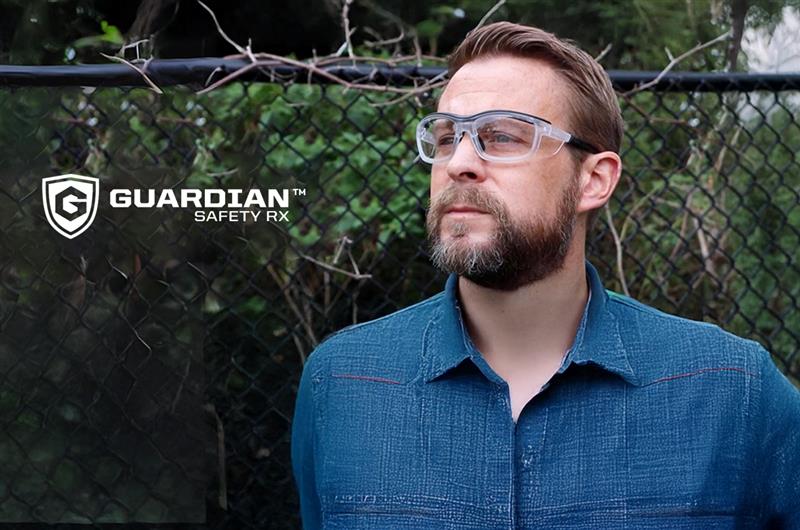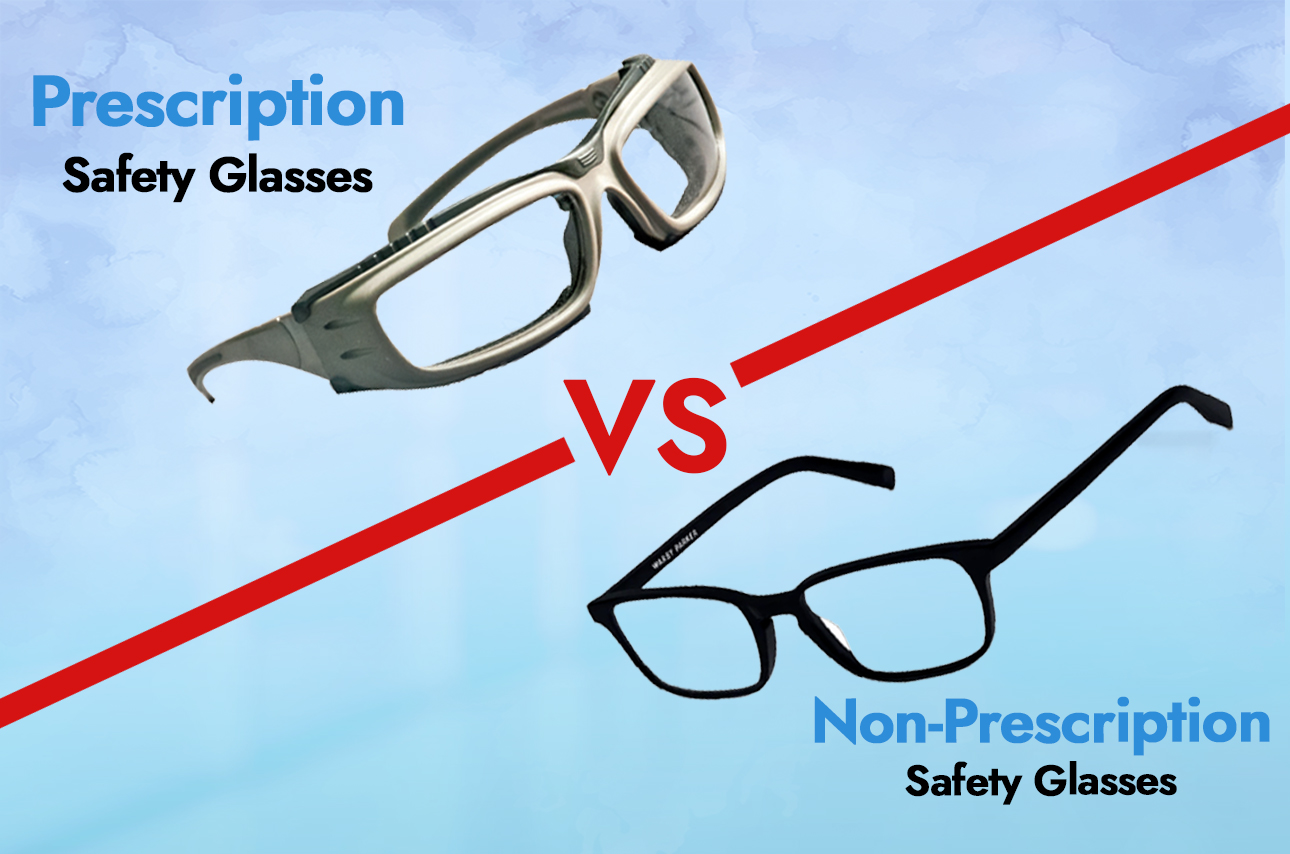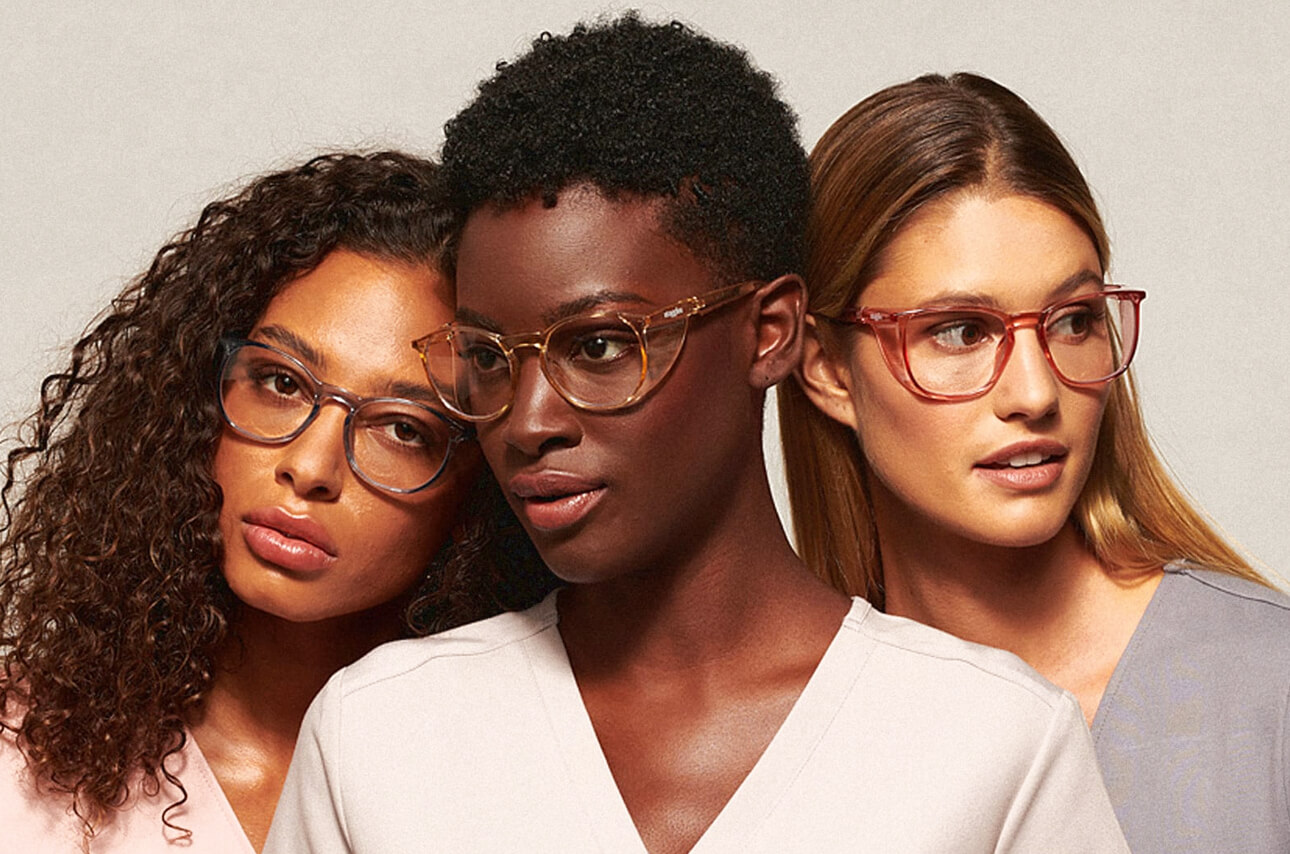
Blog
Can Wearing Safety Eyeglasses Affect Eyesight?
Safety glasses are believed to cause vision problems. It is a legitimate concern that workers are concerned about whether it is safe for their eyes to see through "plastic" (aka Polycarbonate) lenses all day. Safety eyewear cannot cause vision damage.
It can be a source of discomfort like eye fatigue and headaches, which can affect safety and compliance. Two main issues are:
- Eye strain is a condition that causes pain and fatigue in the eyes. It's often accompanied by a headache.
- Eye fatigue occurs when muscles are tired from overuse or intense exercise.
You're likely to have experienced discomfort while wearing safety glasses. Here are some symptoms of eye strain or eye fatigue.
- Eyes that are dry or watery
- Eyes sore
- Trouble focusing
- Blurred vision
- Sensitivity to light
- Headache "behind your eyes"
Eye strain and fatigue are directly related to the quality of your glasses. You'll feel discomfort if you wear low-quality safety glasses for long hours on the job.
Eye strain can affect productivity, even though it won't permanently damage your eyes. It is considered lost time to have to stop and take off your Pentax eyewear to refocus or give your eyes a break.
Eye strain in extreme circumstances can lead to impaired vision. This can result in reduced awareness of your surroundings, which can have serious consequences.
Many Reasons Can Cause Eye Fatigue:
- The wrong fit: A common misconception in the safety department is that one type of eyewear can be purchased and expected to fit all employees. This can cause problems for employees.
- Use the wrong tint: You may need different tints if you work in bright environments, are involved with precision work, or both indoors and outside. Tints that are appropriate help your eyes adapt to the environment. They reduce the intensity at which you need to focus or refocus. Eye strain and eye fatigue can result from not wearing the right tint for your safety glasses.
- Scratched Lenses: Scratched lenses can occur due to damage from work, age, improper storage, or improper care. (Raise your hand if safety glasses have ever been left on your dashboard!) Whatever the reason, scratches can cause blurred vision and eye strain. Safety eyewear lenses should be replaced immediately if they are scratched.
- The low optical clarity of lenses: It's possible that your lenses aren't as high-quality as you would like if you wear low-cost glasses. Wear safety glasses if your lenses appear cloudy or have tiny distortions. This is an indicator of poor optical quality. Excellent optical quality lenses are clear of any aberrations or imperfections. They allow you to see as naturally as possible.
- Unsightly fit: Safety glasses must be snug but not too tight that they cause pain. Because every person's face is different, many styles and sizes of safety glasses will not work for everyone. Safety eyewear retailers stock a wide range of sizes and styles. Safety glasses for women with larger faces have been very popular. There are many styles and sizes available to ensure that every worker has the right fit.
- Lens color: Every lens color has its strengths as well as weaknesses. Eye strain and fatigue can result from the wrong shade of lens. To determine which lens tint is best for you, it is important to assess the situation. Protective eyewear retailers are experts in this field and can help you choose the right lens color.
- Inappropriate use: Wearing safety glasses in a way that is not intended or pushing them up on the forehead can result in discomfort and pain. Poor-fitting eyewear is often the cause of improper use. Make sure to take the time to examine and evaluate your eyewear, and if necessary, change styles.
- Inadequate care: Failure to take care of safety glasses can lead to a variety of problems, including pain and discomfort. Eye strain can be caused by dirty or scratched lenses. Broken or bent frames can lead to poor fitting and uncomfortably high pressure. Safety glasses can be taken care of to ensure a good fit and long-term vision.
- In poor condition: Safety glasses in bad shape can make it uncomfortable, regardless of whether they have been damaged, neglected, or worn out over time. Poor vision and eye strain can also be caused by smashed lenses. All eyewear should be replaced regardless of its quality. Regular inspections of safety eyewear will ensure workers have the right safety glasses for their jobs.
- Situational fit: There are many types of safety eyewear available because different situations and people require different safety eyewear. A single pair of safety glasses won't suit every situation and person. While general-purpose safety glasses are fine, lenses may need to be changed due to changing light conditions. Convertible safety glasses are ideal. Sometimes, you will need more than one pair of safety sunglasses due to changing conditions like humidity or airflow.
- Low quality: Safety glasses that are budget-friendly for occasional use are better than those of poor quality. For those who wear safety glasses every day, it is important to choose quality. Many problems can be avoided by investing in high-quality safety glasses and taking the time necessary to find the right fit. Safety glasses that are comfortable and durable are essential for those who use them for long periods.
- Excessive Glare: It is important to reduce glare in the workplace to eliminate eye strain and poor sight. Glare can also cause headaches, neck and shoulder tension, and other problems.
- Eye strain, fatigue, and eye fatigue: There can be many causes of eye strain and fatigue. Eye strain can be caused by excessive glare, poor fit, or worsening of the lens condition. Poor vision and fatigue can be caused by eye strain and fatigue. They can also cause neck and back pain, as workers change their posture to correct the situation. This list will help you assess the situation of each employee and determine if it is possible to reduce or eliminate any problems.
- Prescription: If you wear prescription eyewear, glasses, or contacts, a misaligned prescription can lead to eye fatigue, headaches, and poor vision. Regular eye exams make sure prescriptions are up-to-date, and corrective eyewear is not a problem.
- Other gear: Safety glasses can be worn underneath helmets or visors if they are too heavy. Over-prescription safety glasses may cause discomfort and pain by adding pressure to prescription eyewear. Workers will find the most comfortable combination by trying out different safety gear.
- Photophobia: The level of sensitivity to light can vary from one person to another. Eye strain can lead to headaches in others. What is comfortable for one person may cause eyestrain for the next. Photophobia can be solved by modifying a person's workspace or tinting their lenses.
- Wearing safety glasses frequently: Workers who are constantly wearing safety glasses may feel "hot spots" or discomfort from prolonged wear. You can either find better-fitting safety glasses or wear safety glasses more often to get used to them.
- Work environment: The workplace environment may be causing dry eyes, allergies, or other health problems. If eye pain or discomfort is causing you concern, it may be worth visiting the doctor.
- Health concerns After all the other areas have been evaluated, it's time for you to think about whether there are other health problems or more serious issues that could be causing your discomfort. If the eye doctor is unable to resolve the problem, a family physician should be consulted to examine the issue further.
Why Is Wearing Safety Glasses Important?
Safety glasses are an essential part of personal eye protection equipment. Safety glasses are essential for many tasks in the workplace, including those that involve fine particles, impact hazards, fumes, or other dangers. It is possible to wonder why they are so essential. You may not have been in an accident that could have caused an eye injury, but you might have. So why not be cautious? Here are some reasons:
Eye Injuries Are Common and Preventable:
The Department of Labor estimates that there are approximately 1,000 eye injuries each day at U.S. workplaces. There are also 165,000 eye injuries each year from sports and at home. Proper safety eyewear could have prevented around 90% of these injuries.
The risk of any kind of eye injury is very high. You can prevent serious injury by wearing safety glasses. Do it. It is not worth the risk of not wearing safety glasses.
Safety Glasses Protect Against a Lot of Hazards
Safety eyewear protects against dust, fumes, and impacts. Surprised at some of these eye injuries? A machine that is not working properly could cause metal shards to fly at your face. Sawdust could get in your eyes from an irregularity in the wood that you're cutting.
You'll see better
Safety glasses will allow you to see better and more comfortably when you work with opaque fumes or fine particles. You can even get prescription safety glasses if you need corrective lenses.
Final Words:
Sometimes it is your hands that how quickly you want to get the perfect vision back if you have some eyesight problems. Wearing eyeglasses continuously can keep your eye health better and there is a chance that after some years your vision gets perfect.








Leave your comment